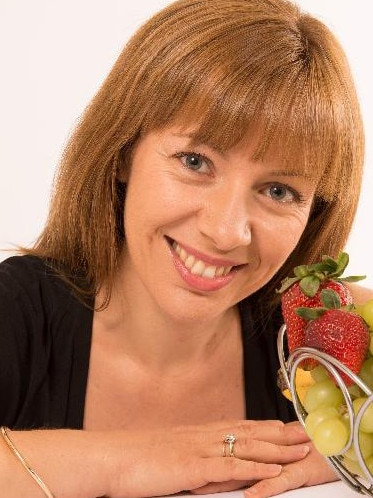Time to get real with kids’ lunch boxes say top dietitians as Aussies prepare to go back to school
As kids head back to school, here’s why you can forget about cutting their fruit into decorative shapes and their sandwiches into smiley faces.

SA News
Don't miss out on the headlines from SA News. Followed categories will be added to My News.
Leading children’s dietitians are urging parents to scroll past “aesthetically pleasing” back-to-school lunch box compilations in their social media feeds.
They say the idea of a “perfect lunch box” is unrealistic and puts unnecessary pressure on parents already juggling “a range of work, family and personal demands”.
Accredited practising dietitian Tania Ferraretto says while providing children with healthy choices is important, a “healthy lunch box” looks different for different kids.
“Some kids don’t love sandwiches, so having a ‘snack box’ of finger foods like cheese, lean meats, crackers, fruit and vegetable sticks is a much better option … my message for parents is not to beat themselves up … (for) the ‘perfect’ lunch box,” the Happy Healthy Me director said.


Adelaide-based founder of Nourish Little Lives Anna Ritan advocates for simple, “practical and low pressure” kids’ lunches.
“You’ll see lots of visually appealing stuff on Instagram with images such as fruit cut out in star shapes and ‘smiley face’ sandwiches … while eye-catching and ‘aesthetically pleasing’, it is not always realistic,” the pediatric dietitian and mum-of-three said.
“A sandwich can look like a sandwich, it doesn’t have to look fancy, and fruit doesn’t have to be cut in fancy shapes – you can just put an apple in.
In terms of social media, she advises following “creators with relevant expertise”.
“Prioritise accounts that promote a balanced approach to nutrition, including variety, moderation and an emphasis on whole foods without extreme restrictions … skip creators who push overly complex or time-intensive recipes if they don’t fit your lifestyle, as they can add unnecessary stress,” she said.
Packaged treats
It’s OK too, Mrs Ritan says, to include a packaged treat, such as a small packet of biscuits, in a child’s lunch box as part of a “balanced meal”.
“For convenience, I choose whole-ingredient pre-packaged foods that also provide nutrition with minimal additives like cheese sticks, no-added-sugar yoghurt pouches, unflavoured rice cakes or wholegrain crackers.
“For recess think fresh fruit and yoghurt, chia seed and fruit pudding, homemade fruit muffins with added fibre, banana pikelets spread with cream cheese, cheese with crackers or hummus and veggie sticks.
“For lunch, think tuna and avocado sandwich, zucchini slice, leftovers like pasta, or a wrap with chicken, grated carrot and cheese or a cheese and butter bread roll with some cut up veg on the side.”
Lunch box portions
And forget filling every section in the on-trend Bento-style, or compartmentalised, lunch boxes.
“Only put in as much as you think your child is going to eat … observe hunger and fullness cues, and pack a bit more if your child often finishes their lunch, complains of being hungry at school, or is very active,” Mrs Ritan said.
A nourishing before-school bite is also paramount with avocado on toast, a vegetable omelette or low-sugar cereal topped with berries, bananas and apples good options, she said.
Breakfast boost
“The ideal breakfast includes a combination of protein, healthy fats, carbohydrates, and fibre to provide sustained energy and keep children full; include protein foods like eggs, yoghurt, nut butter, cheese, full cream milk, seeds, or plant-based options like tofu,” Mrs Ritan said.
“Children need a regular supply of nutrients throughout the day to maintain concentration and support their learning.”
It’s a sentiment echoed by academics.
“Eating properly at school can help kids concentrate … and support their learning,” Flinders University research fellow Brittany Johnson said, adding too many kids don’t get the nutrition they require while at school.
“When looking at lunch boxes we found that 40 per cent of the energy students eat at school comes from unhealthy food,” she said.
Analysis by her team reveals the cost of filling a child’s lunch box each week is about $25.
More Coverage
Originally published as Time to get real with kids’ lunch boxes say top dietitians as Aussies prepare to go back to school





